#terrestrial orchids
Explore tagged Tumblr posts
Text
Wild orchids in Croatia? More likely than you think



They are gorgeous, I found them 20 meters away from the sea
23 notes
·
View notes
Text
It reminded me of the mouse/mouse tail plant (Arisarum proboscideum), which is pollinated by fungus gnats:
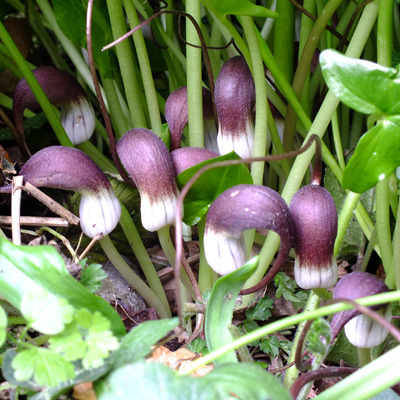
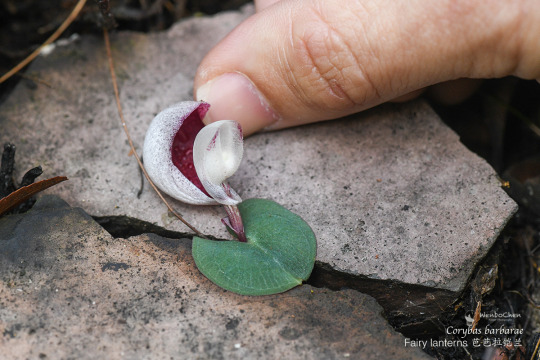
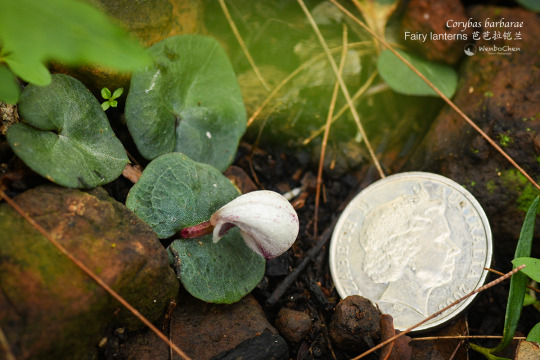

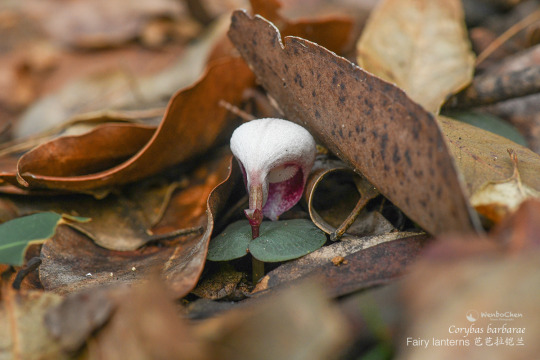
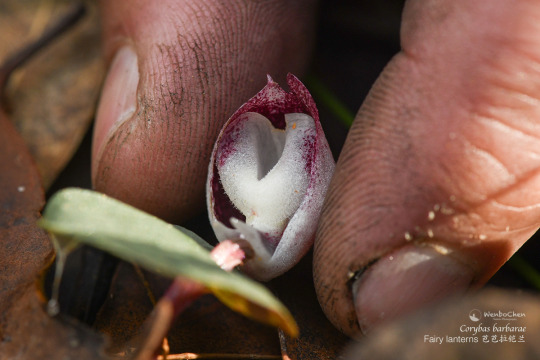
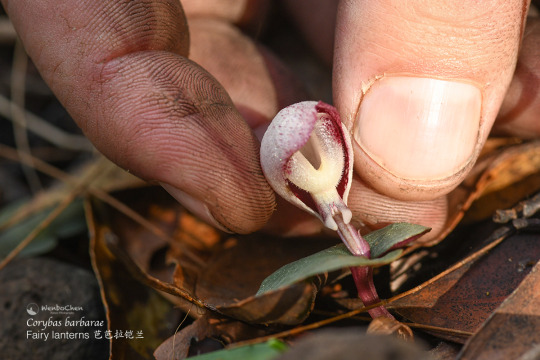

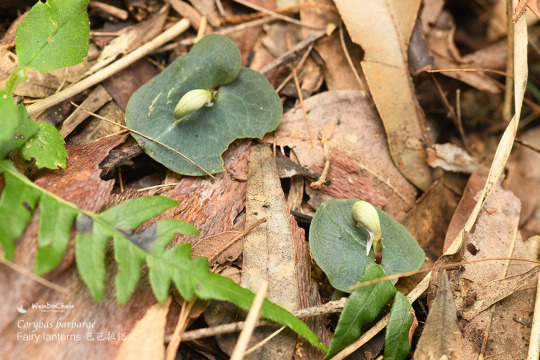
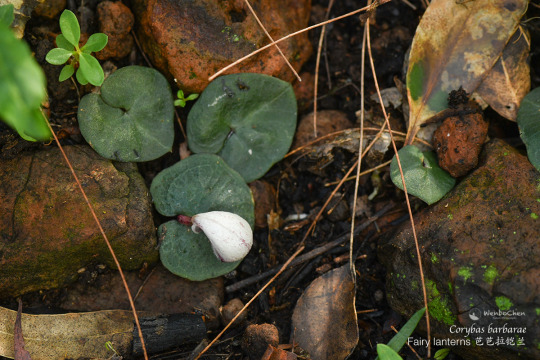
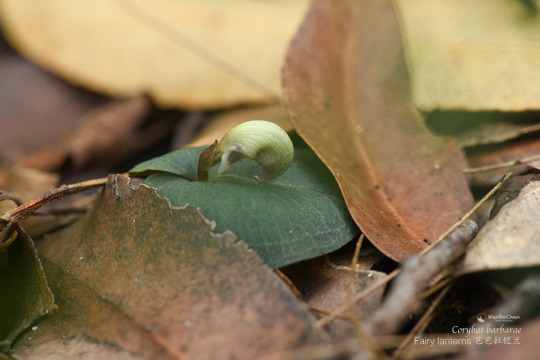
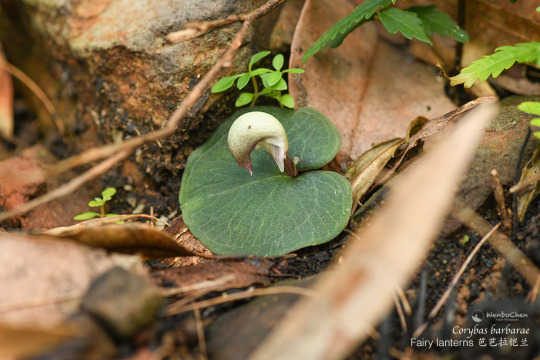
The fairy lantern (Corybas barbarae) is a small terrestrial orchid endemic to eastern QLD and NSW (north of Sydney). The hairy labellum is covered by a large, curved, and inflated dorsal sepal. The linear lateral sepals are tiny (2mm), and the minute petals (1mm) are hidden by the labellum. It is believed that fungus gnats are its pollinators. Apart from that, little is known about its reproduction and dispersal mechanism.
1K notes
·
View notes
Text

Ludochilus dominyi, a lovely cross of Ludisia discolor and Anoectochilus roxburghii.
173 notes
·
View notes
Text
Official nature post

Silky Blue Orchid
Western Australian wildflower
224 notes
·
View notes
Text

Making a list of plant genera for no particular reason and this is what I get…
#someone come up with a clever caption pls#Aa is a genus of terrestrial montane orchids found in Latin America#probably named so it could be first on every list#Collin does science
12 notes
·
View notes
Text
Disa Kewensis 'Ann'

Photo by D. Britten
#disa kewensis#gaygardener#disa orchid#plantblr#plantlife#garden#flowers#orchidea#orchid garden#orchids#orchidee#orchid#storczyk#african terrestrial orchid#african orchids
46 notes
·
View notes
Text

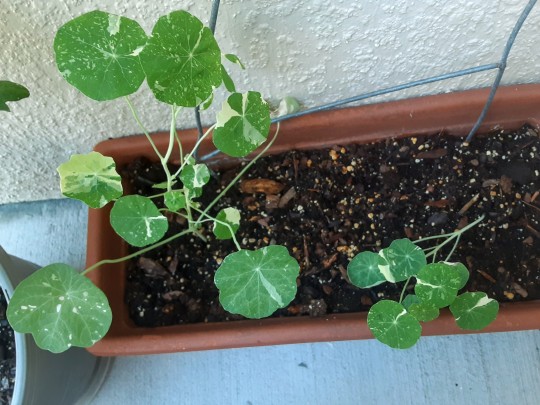
Our A. chapaensis is preparing to flower, and the nasturtiums are developing nicely :)
23 notes
·
View notes
Text
We used to have some in our garden. Mom mail ordered many wonderful plants, and most were native wildflowers.

Wild Goodyera orchid found in Oregon State Park
23 notes
·
View notes
Text
I am so freaking feral about orchids, you guys, please help. QQ It's becoming a problem. Anyway, meet my orchids:

This is my favorite phalaenopsis orchid in terms of color! I just really love the wine-red splotches on a white flower. Apparently this particular sort is a very prolific bloomer and is always shooting up spikes. I've only had her for a week or so and just repotted her recently, so I look forward to finding out!

This is my most recent acquisition - I got her for a measly $7 (pot included) at Lowes because the entire spike except for this very very bottom flower had been snapped off at some point! I've good luck re-blooming phals and I really love the soft violet and orange color combination, so I had to nab her.

THIS orchid, on the other hand, I have had since last November, and she is still holding onto the same flowers, which seems absolutely insane to me. In fact, I'm pretty convinced that the flowers that she did drop, she would still have if I hadn't given faulty instructions to my plant-sitter, which led to her and another orchid getting dehydrated and dropping half their blooms. Eight months of blooms! And no signs of stopping! And she's growing plenty of healthy new roots AND a new leaf!! I love her and I love how bright and cheery her flowers are.

These are my last two phalaenopsis orchids. The one on the left is a miniature that blooms purple. She's bloomed twice for me, but she was double-potted with a second orchid, and I was inexperienced and killed a lot of her roots while repotting her, so she's been recovering from that for like half a year. If you look closely, you can see that she's actually just started growing a new leaf, which I'm really excited for!
On the right is a very classic white phal that my mom gifted me. She's also bloomed twice for me, and is also in the middle of growing a new leaf. :)

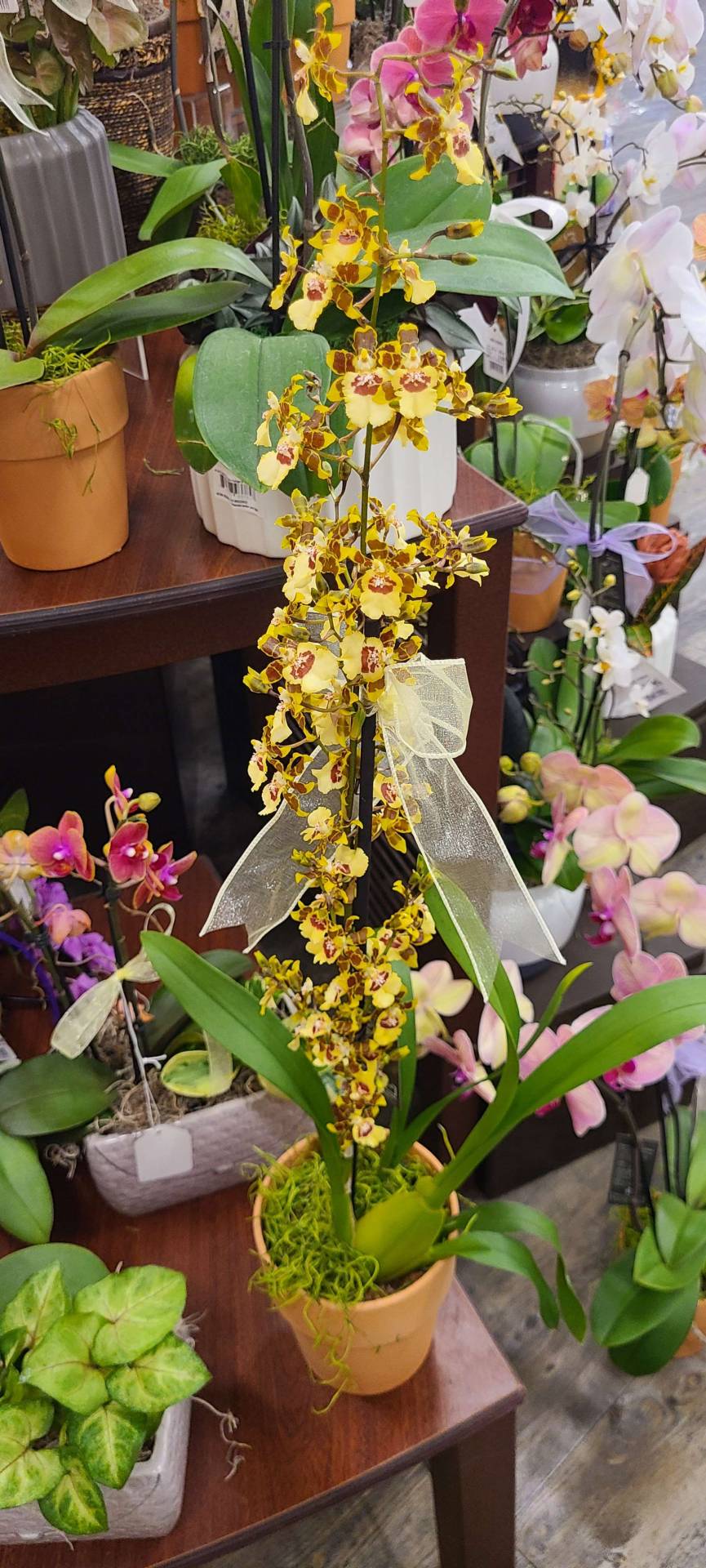
These are my two oncidium orchids, which have since been repotted and mostly lost their blooms! I got the one on the left also heavily discounted because her blooms were already falling, but as you can see in the photo, she's literally in the middle of growing a new flower spike, haha. The one on the right is currently almost done blooming, and she might be my favorite of all because she's SUPER fragrant and smells amazing!

This is my Ludisia discolor, a terrestrial jewel orchid that I'm really excited to see unfurl her new leaf! She's in a lower-light area of my house and I'm hoping she does well there. If not, I have a different shelf I can move her to later with artificial lights.

And these are some baby Macodes petola cuttings I bought, lightning jewel orchids! The reason people grow them for their foliage is a little more visible in photos than it is with Ludisias, but still not true to real life - the white patterns on both actively sparkle under light! It honestly looks like they've been doused in glitter. These guys are all in sphagnum moss in hopes of rooting them. The cuttings were honestly much smaller than I thought they'd be when I bought them, but I'm keeping my fingers crossed. I'm keeping them under a glass cloche for humidity as well!
And that's it! Just wait until my violets and streptocarpus start blooming, though, haha. I just. Really love plants.
#personal#plantblogging#dear diary#orchids#phalaenopsis#oncidium#jewel orchids#ludisia discolor#macodes petola#a lot of people tell me they find orchids hard to care for when I tell them I keep orchids#and it's kinda funny bc at this point I find especially phals to be INCREDIBLY easy to care for#even moreso than more “standard” houseplants just in terms of familiarity#flowers#long post
42 notes
·
View notes
Text





Orchid of Western Australia: Caladenia longicauda. (The little white flower next to it belongs to one of the largest Drosera species in the world: Drosera gigantea. )
10 notes
·
View notes
Text
Guys please. Please I know terrestrial orchids. I Know About The Terrestrial Orchids. Not as much as I'd LIKE, to be fair, but I know of them. I promise I know of them. I understand that they are there, out there, in the dirt, living in dirt, with their roots in the dirt like any other self-respecting plant. I understand. I know they are there. I yearn for them from afar, gazing out my window at all the wetlands that surround me now. I want to see a native terrestrial orchid so so bad. I Know. I Do Know.
If someone doesn't know that the "normal" basic orchid you grow as houseplants is an epiphyte, they will not know about terrestrial orchids. I mean, probably. 99.9% of the time, I'm pretty sure. This is a post about growing orchids as houseplants. If you are growing a terrestrial orchid as a house plant then you would KNOW how to grow normal orchids because the only way you'd find a terrestrial orchid in cultivation is to go to a specialty grower or a hobbyist and by that point you are already deep in the orchid hole. Or you find another plant that is in the orchid family that most people, colloquially, do not consider orchids, just like we don't consider daffodils a lily. Orchidaceae is the second largest plant family in the world, it contains multitudes. It contains many. It contains members that grow on the ground and in trees. Some orchids spend their lives growing entirely underground, with no leaves, parasitizing other plants and only emerging above ground with white flowers that only last weeks to reproduce. There are so many orchids in the world. They are out there, of orchiding. I know. I promise I know.
Information is shared in context. This is about growing orchid-shaped things, the typical orchid, the orchid that most people think of when they think orchid. If someone doesn't know that an orchid is an epiphyte, then telling them about More Orchid is not helpful! Not in the moment! I understand the need to Orchid-dump™ (the parasitic ghost orchids are so fucking cool. Did you know there are some botanists who think that the orchid family might be predisposed to parasitism because of their symbiotic relationship with fungi) (also their fungi symbiosis is a lot. Look into orchid reproduction if you want to be confused) (also-) but more information is not always better!! If the topic is about cultivating epiphytic orchids as houseplants, then terrestrial orchids don't need to be part of the conversation. It might make people think that any random orchid they get might be a secret terrestrial orchid and stress them out because they don't know how to take care of it. It might make them seek out a terrestrial orchid on their own which tbh most people should not do because a lot of rare orchids, terrestrial and otherwise, are poached from the wild. It might make them confused in general and they just dump out all the information they just learned and forget about all orchids when they otherwise would've gotten one!
I'm not saying you can never ever ever mention terrestrial orchids, ever, not even on this post! I've learned many things about terrestrial orchids from reblogs and tags that people have added and it has delighted me! But there is a reason I didn't mention it on my main post!!!!!!! Just because I didn't mention them doesn't mean that I have Insufficient Orchid Knowledge!!!!!!!!!!!! It's not a psyop by Big Orchid to misinform people about the truth. Please. Please I DO know about terrestrial orchids. I know of them I swear. The not mentioning was STRATEGIC, I am not lying on purpose, I do not come on the internet and misinform people about orchids for fun and profit. Please. You have to understand me.
I started with succulents like everyone else but tbh orchids are rapidly becoming my plant blorbos. Everyone takes care of them wrong and it's not your FAULT because the care instructions that come with them are!! Incorrect!!! If you do what they say then your orchid will die!!!! If you give them the right environment they're SO easy. They're such easy plants to grow. They have been UNFAIRLY SLANDERED by a MISINFORMATION campaign. They don't deserve this.
#the orchid post#I KNOW ABOUT TERRESTRIAL ORCHIDS ):#this is a not serious post but some replies DO have the tone of “um how dare you lie. about orchids.”#and I'm just like 🧍#IT WAS STRATEGIC.#I'm not an orchid noob!;;!! im an orchid goat or whatever the kids are saying these days#i know information ): about orchids )))): i do know it!! i swear i know it!!!!!!!#t
38K notes
·
View notes
Text
What Are Lithophytes?
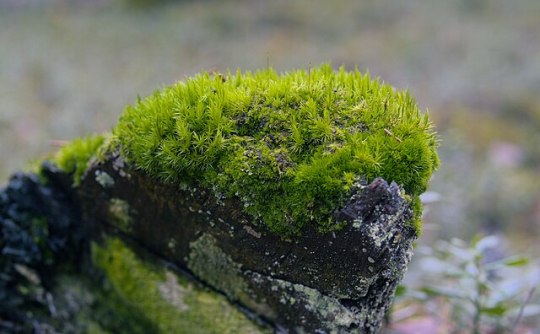
Originally posted on my website at https://rebeccalexa.com/what-are-lithophytes/
Ask most people what plants need to grow in, and they’ll say “soil” or “dirt”, right? And for the majority of terrestrial plants that’s the case. But given the sheer scale of biodiversity and the ability of species to make use of any niche–no matter how small–left unoccupied, there are of course exceptions. Take epiphytes, for example, that cling to the bark of trees and other plants. Rather than drawing nutrients and water from soil, they instead absorb what they need from the air. Psammophytes also get what they need from the air, but instead sink their root system into shifting sand dunes.
I am especially fascinated by lithophytes. “Litho-” means “stone”, and so a lithophyte is simply a plant that grows on stone. There are two main types of lithophyte. Epilithic lithophytes grow on a stone’s surface, and a crevice in the stone may be populated by endolithic lithophytes. Some of these plants can only grow on stone, so they’re described as obligate lithophytes, but their facultative lithophyte neighbors are those that are able to colonize both stone and soil or another substrate at the same time���some lithophytes can even live as tree-dwelling epiphytes instead!
Like epiphytes, a lithophyte may have some ability to absorb water and nutrients from the air. But they also capitalize on anything that ends up washed into their roots by rain. Endoliths may find that over time debris accumulating in their crevice offers a much-needed resource boost. As part or all of a lithophyte dies, the surrounding plants extract nutrients from the decaying matter–nothing goes to waste in nature, after all. They do not, as a general rule, have a negative effect on the rocks themselves; while some rock-dwelling lichens may chemically weather the stone beneath them, lithophytic plants simply use the rock as a convenient surface to take root.
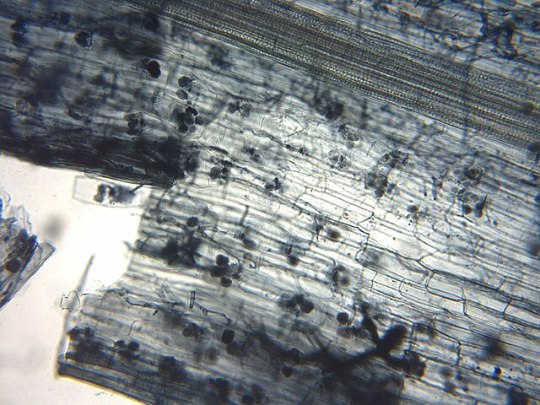
Arbuscular mycorrhizae within a root as seen under a microscope
What I find really cool is that lithophytes can be mycorrhizal! Their roots are pierced by colonies of various arbuscular mycorrhizal fungi that draw up nutrients from the soil and share them with the plants. While this is a very common relationship in nature–four out of every five vascular plant species uses arbuscular mycorrhizal networks–lithophytes seem to have cultivated a greater concentration of these helpful fungi.
A moss-covered rock is often someone’s first encounter with lithophytes. Lacking proper roots, mosses hang onto the stone with tiny rhizomes. Over time they might cover its entire surface, and if said surface is relatively flat and protected from weather and other erosive forces, their decaying remains could be the very beginning of a new patch of soil.
But it’s not just the little bryophytes like mosses that can eke out a living on a rock. More complex vascular plants may also take root on or within stone. One of my favorite ferns, the licorice fern (Polypodium glycyrrhiza) commonly grows as an epiphyte on trees in the Pacific Northwest, but given the right opportunity it will colonize a suitable crevice in a cliff. Orchids may have a reputation for being difficult to care for in captivity, but in the wild there are a lot of lithophytic species. Many, like Dendrobium teretifolium or many Phalaenopsis species, can also live quite well as epiphytes on a tree or other plant. And the wallflower, Erysimum cheiri, got its common name for its tendency to grow out of cracks in rocky slopes.

Nepenthes campanulata
Unsurprisingly, some carnivorous plants make their homes on rocks, and their carnivory allows them access to much-needed nutrients in an otherwise limited setting. The pitcher plant Nepenthes campanulata often grows in colonies on cliff faces. Heliamphora exappendiculata, another pitcher plant, will happily grow both in wetlands and on constantly damp rocks. Sanderson’s bladderwort (Utricularia sandersonii) doesn’t eat insects, but instead sucks up microscopic organisms using bladders the plant buries under nearby soil or sediment.
One more thing: are the plants you see growing in gravel also lithophytes? Not necessarily. There may be soil beneath the gravel that the plant is exploiting. Or the gravel itself may be part of a mineral soil–one that has a lot of stone and not much organic material. A true lithophyte is going to be attached to a rock or rooted in its crevice, though it’s possible to find lithophytes growing on stones that, through weathering, may be feeding fragments into a nearby mineral soil over time.
Did you enjoy this post? Consider taking one of my online foraging and natural history classes or hiring me for a guided nature tour, checking out my other articles, or picking up a paperback or ebook I’ve written! You can even buy me a coffee here!
#lithophytes#botany#plants#science#nature#scicomm#carnivorous plants#moss#fungi#mycorrhizal fungi#mycology#ecology#bryophytes#biodiversity#epiphytes#educational
121 notes
·
View notes
Text
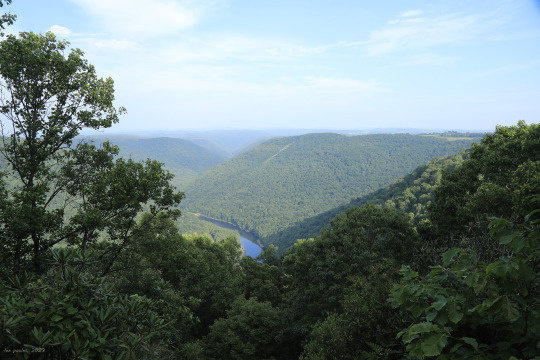

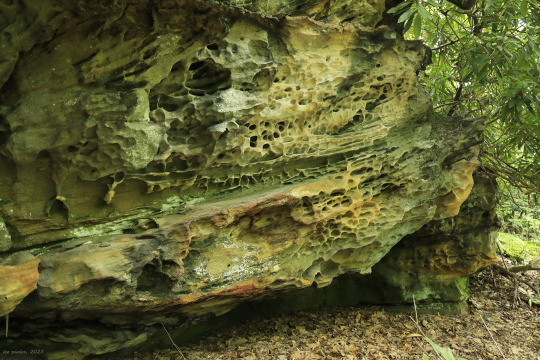

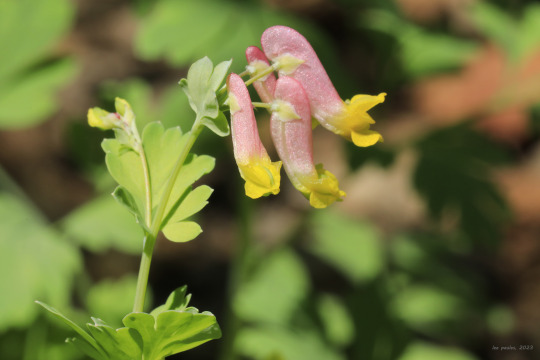
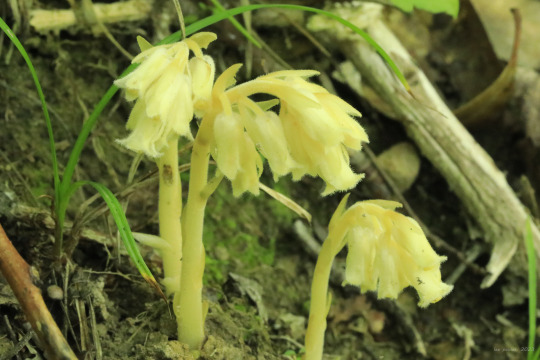


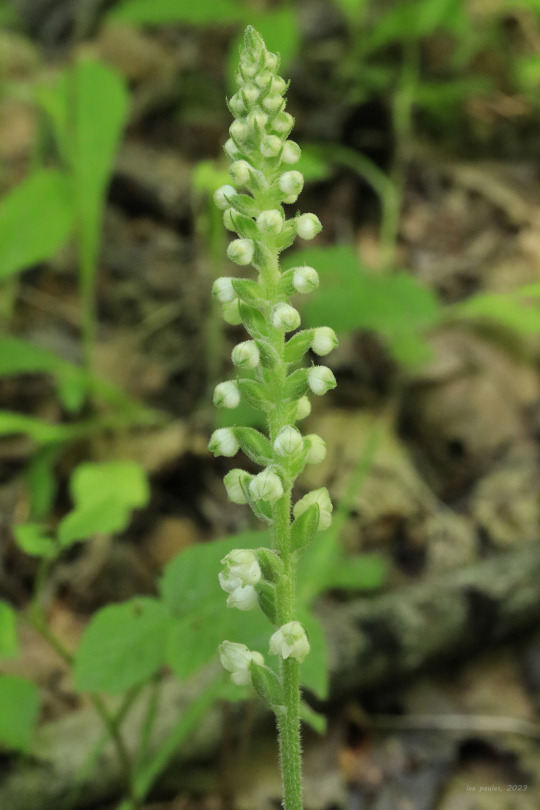
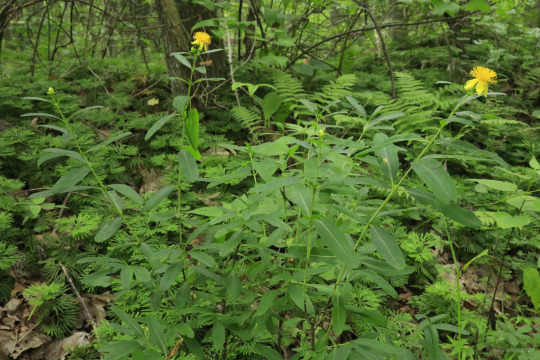







A hike in the Cheat River Canyon on a hazy, mid-summer day brings a great many rewards, both large and small.
From top: Fractured and pitted sandstone gives testimony to the canyon's ancient struggle with the elements; black cohosh (Actaea racemosa or Cimicifuga racemosa), whose towering flower spikes stalk the old woods like magical beings; the colorful rock harlequin (Corydalis sempervirens), an endangered fumitory that haunts the canyon's rocky outcrops; pinesap (Monotropa hypopitys), a parasitic plant closely related to Indian pipe; spotted St. John's wort (Hypericum punctatum), which is distinguished from the invasive St John's wort (Hypericum perforatum) by the numerous black dots on its flowers and leaves; downy rattlesnake plantain (Goodyera pubescens), a shade-tolerant terrestrial orchid that favors oak-hickory woods; shrubby St. John's wort (Hypericum prolificum), a mounding, deciduous shrub of open, sandy woods; orange-fringed orchid (Platanthera ciliaris), a stunning late summer beauty of Appalachia's moist meadows and open woods; a hummingbird clearwing moth (Hemaris thysbe) visiting a late-blooming milkweed; a silvery checkerspot (Chlosyne nycteis) drinking up the nectar of a butterfly milkweed (Asclepias tuberosa); an American green crab spider (Misumessus oblongus) stalking a black-eyed Susan for its next meal; a large milkweed bug (Oncopeltus fasciatus) being perfectly beautiful on a lazy summer day; and last but not least, a hulking patch of eastern Jack-0'-lanterns (Omphalotus illudens), which contrary to what field guides say have never glowed in the dark for me (I love the toxic little beauties nonetheless).

#appalachia#vandalia#west virginia#wildflowers#flora#summer#snake hill wildlife management area#cheat river canyon#chestnut ridge#fungi#insects#orchids#black cohosh#rock harlequin#pinesap#spotted st. john's wort#downy rattlesnake plantain#shrubby st. john's wort#orange-fringed orchid#hummingbird clearwing moth#silvery checkerspot#butterfly milkweed#american green crab spider#large milkweed bug#jack o' lantern#lepidoptera
174 notes
·
View notes
Text

Habenaria rhodocheila - my first habenaria! As always, hope I don’t kill it. 😌
These have a tuber and a dormant season. I’ve done decently with other plants like this, so it does stand a chance! They also readily increase, I’m told, so it’ll eventually make a nice specimen.
#plantblr#houseplant#houseplants#flowers#orchids#orchid#habenaria#Habenaria rhodocheila#terrestrial orchid
12 notes
·
View notes
Text
Bestiaryposting Results: Rabyeang
This one's posting a few hours later than usual, because due to various circumstances, we ended up recording an episode of the podcast this evening, so I didn't have time to get to it until now.
Anyway, odd and somewhat uncomfortable entry, some parts of it seem clear though. Genuinely interested to see what comes up because I haven't gotten around to checking in on it until right this moment.
Anyone who isn't sure what I'm talking about can find out at https://maniculum.tumblr.com/bestiaryposting.
The entry our artists are working from can be found here:
If you want to join in on drawing the next one, that entry can be found here:
Art is below the cut in the order in which it was posted.

@silverhart-makes-art (link to post here) decided to go with an aquatic creature to make it easier for it to interact with lampreys, specifically a shark because they give live birth. I think the post here is pretty great, and including a lamprey is quite nice actually. Extremely cool-looking all around -- I encourage anyone reading this to check the linked post for a more detailed description of what's going on here and how the artist reached this design.

@cheapsweets (link to post here) has drawn two snakes in the act of twining around each other as the female bites the male's head off. Kind of like a caduceus that's gone wrong somehow. Going in a snake direction makes sense, and the entwined pose I think makes it work. They have also included a rather cute bonus sketch in the linked post along with the explanation of their design, which I encourage y'all to check out. (Also thank you for providing alt text.)
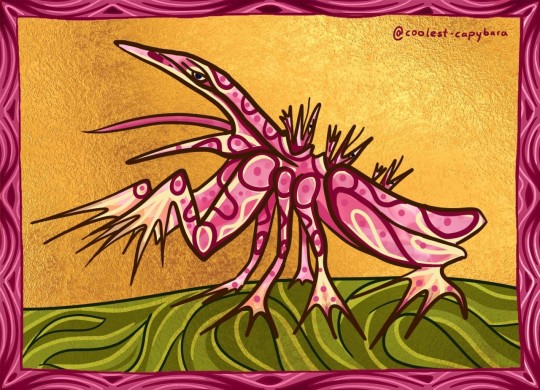
@coolest-capybara (link to post here) has made a very eye-catching but also somewhat... worrying creature by taking inspiration from Surinam toads and orchid mantises. The way those two inspirations are merged is really clever, I think, and as usual I love the medieval-inspired style. This is a creature I appreciate in drawing form but would probably find quite off-putting in real life, which I think is a sign of good design. (Also, thank you for providing alt text.)
That's it this time around, I'm afraid -- this particular entry doesn't seem to have sparked inspiration in many people. (Understandable.) So let's check in with the Aberdeen Bestiary.

So, as I'm sure you've all guessed from the highly accurate illustration, this is the viper.
(I'm getting increasingly curious about what the deal is with this very specific head design you see on so many medieval creatures.)
So yeah, the bit with the lamprey is presumably complicated by the fact that one is an aquatic creature and the other terrestrial -- breath is going to be a concern, at the very least.
I think knowing it's a viper explains a lot of the entry: in the medieval metaphorical space, a viper is of course Very Wicked, so they really run with that here.
I wasn't aware vipers gave live birth, so I Googled it (apparently they do), and interestingly one of the top results was this Quora post:
So apparently elements of this are still hanging around, if someone is asking on the Internet whether vipers really eat their way out of the mother. Also interestingly, the answer makes note of other medieval myths about vipers, including both the head-biting and the lamprey thing. (And also one that female vipers look human above the waist, which is a new one by me.) Instructional.
21 notes
·
View notes
Text




This is one of my rarest orchids, known as Eulophia quartiniana! (:
It's a terrestrial, deciduous orchid that's native to Ghana. In the wild it normally would grow in grassy plains.
This species almost disappeared from the wild many years back, but was reintroduced again more recently!!
121 small plants were grown by seed, and 100 of them went back to Ghana. My neighbour was the one in charge of growing the orchids for their reintroduction, and was allowed to keep a few of the smallest plants for his collection.
My orchid is one of those few he kept from the 121 seedlings he grew, and I believe it is somewhere around 20 years old now and flowering for the first time! :D
#plants#botany#plantblr#flowers#orchids#eulophia#eulophia quartiniana#in case you were wondering:#the original two plants that the seeds came from were given to Margaret Baird of soos from a friend in Ghana#(said friend in Ghana worked for government and environmental restoration)#my neighbour was given the seeds by Margaret who had produced them from her two plants#the seeds were produced in 1986#that pretty much sums it up (:#hope you enjoy this neat plant as much as I do!! :3#spiffy speaks
21 notes
·
View notes